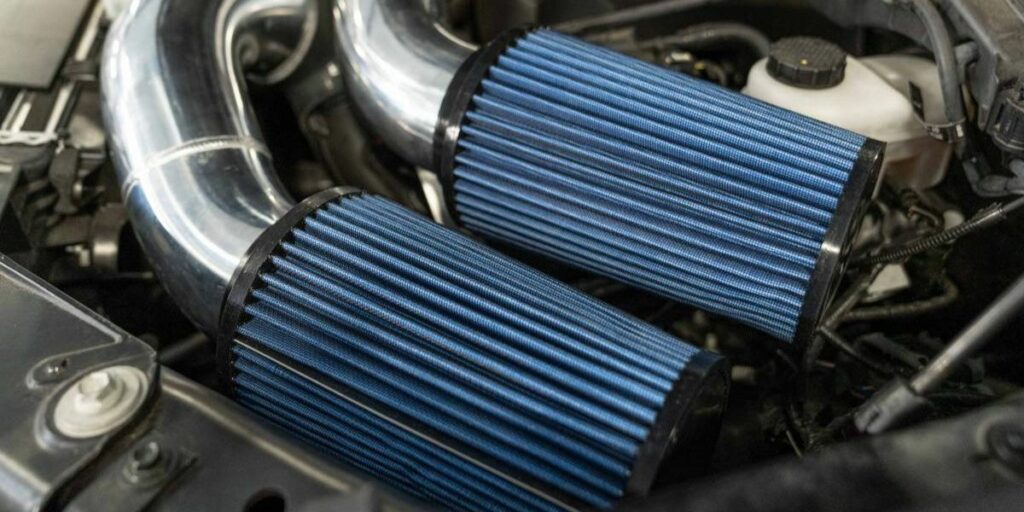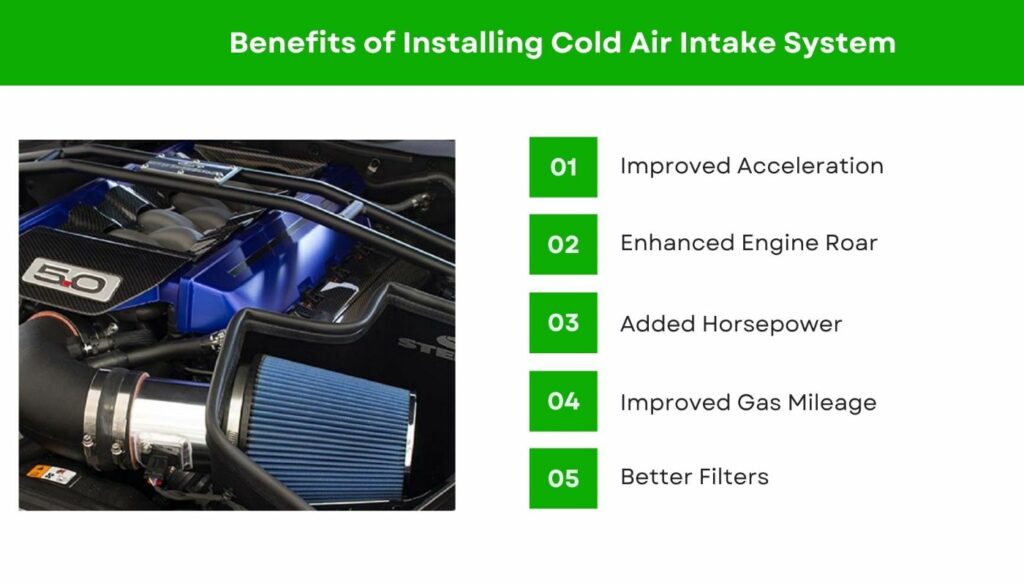In an effort to boost the overall performance of vehicles, various aftermarket systems have been designed to take on this task. In this article, we will focus on one of these aftermarket add-ons; the cold air intake system. So, what are its benefits? And, how do you install it?
Read on to find out.
What Is A Cold Air Intake System?
In order to fully understand the benefits of the cold air intake system, we must first point out what cold air intake system is. To put it simply, the cold air intake, also known as CAI, is an aftermarket collection of parts. Its sole purpose is to bring cool air into a vehicle's internal-combustion engine.

Here is how it works. The cold air intake system first changes the air filter's position outside of the engine's compartment. By doing this, cooler air is sucked into the vehicle's engine for combustion. As cold air enters the combustion chamber, there will be an increase in oxygen levels, implying more combustion power.
Benefits of Installing Cold Air Intake System

Regardless of the type of car you drive, installing a cold air system will positively affect its performance. Below are facts about how installing a cold air intake system will benefit you:
Improved Acceleration
For every time you hit the gas pedal, the cold air intake system helps you accelerate faster. How? As we mentioned earlier, cooler air implies more oxygen. This means that when a significant amount of cold air goes into your vehicle's engine, it surges your car's responsiveness by aiding combustion.
Enhanced Engine Roar
For many automobile enthusiasts, the roaring sound of an engine is pleasing to the ears. Fortunately, the cold air intake system helps you achieve this. By design, the factory air intake system works silently. However, this aftermarket system (CAI) works differently. As the cold air enters the engine, it results in a more intense roar, or as some may say, a throaty growl.
Added Horsepower
We will keep emphasizing this single fact; the amount of air used during combustion will determine the power output of any engine. Fuel will burn much more efficiently with cold air when put side-by-side with hot air. This yields an increase in oxygen combustion, thus, increasing horsepower.
However, the amount of horsepower cold air intake that may add to your car's engine heavily depends on the configuration of your vehicle. On average, CAI adds about 5 to 12 horsepower to your engine.
Improved Gas Mileage
The combustion engine generates power by burning fuel, which implies that the amount of oxygen that enters the engine is important. When there isn't enough oxygen for combustion, the engine will consume fuel much faster than normal. Now, this is where CAI does its job.
By installing the cold air intake system, the engine of your vehicle is guaranteed optimum fuel to air ratio, which economizes fuel. Another side benefit is that you save some extra cash in the long run on gas expenses.
Better Filters
Unlike the aftermarket cold air intake that is mostly made of aluminum, plastic, rubber, or stainless steel, factory air intake systems are designed with paper air filters. Due to this, you have to replace them after every 15,000 miles. On the flip side, the cold air intake system does not require much maintenance. In fact, they are to be cleaned only after 30,000 to 40,000 miles. You do not need any skills or special equipment to do this. All you need to do is wash it with soapy water and rinse it properly. To sum it up, with the CAI, you are guaranteed a more durable and efficient filter.
How to Install Cold Air Intake System
Although installing a cold air system yourself takes you longer than an expert, you can save some extra bucks and gain some experience by doing it yourself. Here's a tip before we go into the step-by-step guide on installing a CAI.

Pro tip 1: Ensure that you have enough light in your garage or work outside during the day.
Step 1: Make sure you disconnect the negative battery terminal. This is to reset the PCM (powertrain control module), so it can adjust to the new fuel/air ratio generated by the CAI.
Step 2: Loosen the hose clamp on the factory air tube at the throttle body. Afterward, slip the air tube off of the throttle body
Step 3: Take out the screws that hold the MAF sensor (mass flow sensor) in the factory air tube. Proceed to remove the sensor and keep it in a safe place. Also, remove the bolts that hold the factory air box.
Step 4: Take off the air tube from the throttle body and remove the factory intake and airbox.
Pro tip 2: Now will be an excellent time to use the throttle body cleaner. Ensure to consult the manual if the car has an electronic throttle body.
Step 5: Open/unbox the CAI parts and slide the air filter onto the air tube. You can use a hose clamp to hold it to the tube
Step 6: Put the non-filter end of the intake tube through the airbox (do this until only a few inches of the tube and the filter remain outside the box).
Step 7: Put the silicone tube above the throttle body and fit the air tube into the silicone tube. Proceed to set the airbox in place and use the bolts from the CAI to hold it.
Step 8: Attach the MAF sensor to the intake tube and bolt the airbox lid. Reconnect the battery and start the car. It would be best to keep the engine idle for some minutes to adjust to the different air volumes.
You can now take your car for a spin as you have successfully installed the cold air system to your car's engine.
Pro tip 3: Ensure not to expose the air filter to water. If exposed, water will get sucked into your engine, and that's not good.
Conclusion
Based on what you now know about the cold air intake system, it's a no-brainer that CAI is advantageous to your vehicle. From fuel economy to extra horsepower, the benefits are pretty significant. In fact, several car manufacturers recommend that you install a CAI. According to experts, it allows your engine to breathe. So, if you haven't installed one already, what are you waiting for? Thanks to this article, you now know how to do it yourself.
